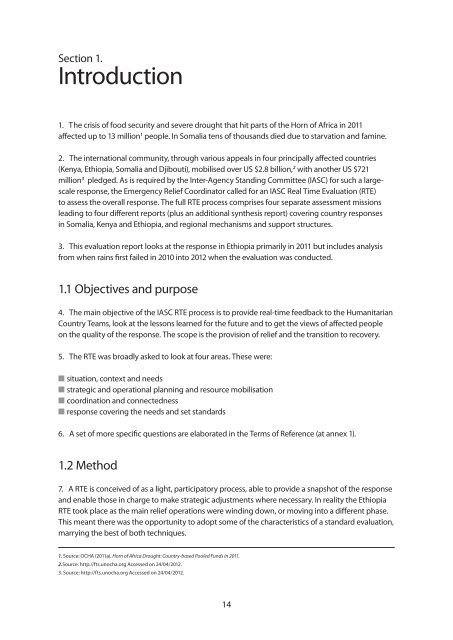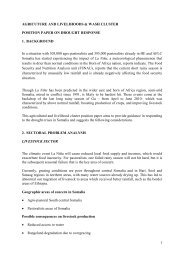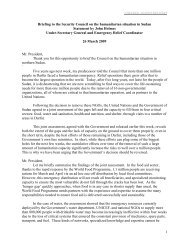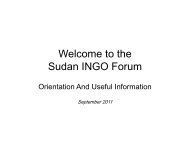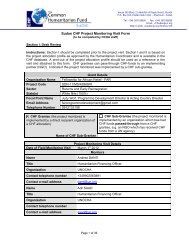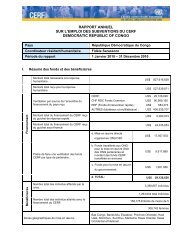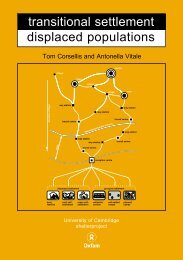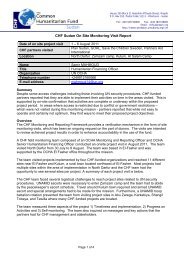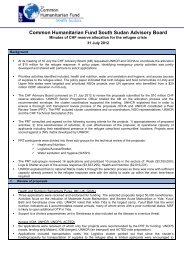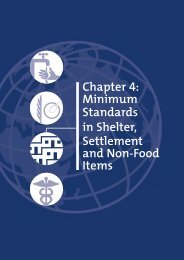Ethiopia - OCHANet
Ethiopia - OCHANet
Ethiopia - OCHANet
Create successful ePaper yourself
Turn your PDF publications into a flip-book with our unique Google optimized e-Paper software.
Section 1.<br />
Introduction<br />
1. The crisis of food security and severe drought that hit parts of the Horn of Africa in 2011<br />
affected up to 13 million 1 people. In Somalia tens of thousands died due to starvation and famine.<br />
2. The international community, through various appeals in four principally affected countries<br />
(Kenya, <strong>Ethiopia</strong>, Somalia and Djibouti), mobilised over US $2.8 billion, 2 with another US $721<br />
million 3 pledged. As is required by the Inter-Agency Standing Committee (IASC) for such a largescale<br />
response, the Emergency Relief Coordinator called for an IASC Real Time Evaluation (RTE)<br />
to assess the overall response. The full RTE process comprises four separate assessment missions<br />
leading to four different reports (plus an additional synthesis report) covering country responses<br />
in Somalia, Kenya and <strong>Ethiopia</strong>, and regional mechanisms and support structures.<br />
3. This evaluation report looks at the response in <strong>Ethiopia</strong> primarily in 2011 but includes analysis<br />
from when rains first failed in 2010 into 2012 when the evaluation was conducted.<br />
1.1 Objectives and purpose<br />
4. The main objective of the IASC RTE process is to provide real-time feedback to the Humanitarian<br />
Country Teams, look at the lessons learned for the future and to get the views of affected people<br />
on the quality of the response. The scope is the provision of relief and the transition to recovery.<br />
5. The RTE was broadly asked to look at four areas. These were:<br />
n situation, context and needs<br />
n strategic and operational planning and resource mobilisation<br />
n coordination and connectedness<br />
n response covering the needs and set standards<br />
6. A set of more specific questions are elaborated in the Terms of Reference (at annex 1).<br />
1.2 Method<br />
7. A RTE is conceived of as a light, participatory process, able to provide a snapshot of the response<br />
and enable those in charge to make strategic adjustments where necessary. In reality the <strong>Ethiopia</strong><br />
RTE took place as the main relief operations were winding down, or moving into a different phase.<br />
This meant there was the opportunity to adopt some of the characteristics of a standard evaluation,<br />
marrying the best of both techniques.<br />
1. Source: OCHA (2011a). Horn of Africa Drought: Country-based Pooled Funds in 2011.<br />
2.Source: http://fts.unocha.org Accessed on 24/04/2012.<br />
3. Source: http://fts.unocha.org Accessed on 24/04/2012.<br />
14


